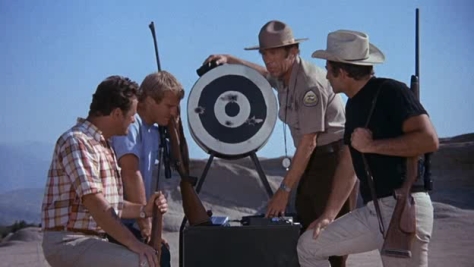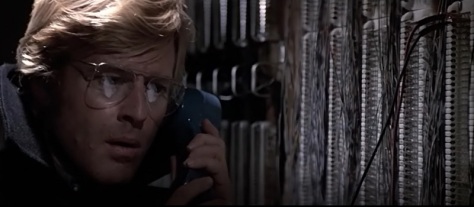By Dennis Hartley
(Originally posted on Digby’s Hullabaloo on December 7, 2024)

Yes, I know. That’s an oddly generic (some might even say silly) title for a post by someone who has been scribbling about film here for 18 years. Obviously, I love movies. That said, I am about to make a shameful confession (and please withhold your angry cards and letters until you’ve heard me out). Are you sitting down? Here goes:
I haven’t stepped foot in a movie theater since January of 2020.
There. I’ve said it, in front of God and all 7 of my regular readers.
*sigh* I can still remember it, as if it were yesterday:
It turns out that it is not just my imagination (running away with me). A quick Google search of “Seattle rain records” yields such cheery results as a January 29th CNN headline IT’S SUNLESS IN SEATTLE AS CITY WEATHERS ONE OF THE GLOOMIEST STRETCHES IN RECENT HISTORY and a Feb 1st Seattle P-I story slugged with SEATTLE BREAKS RECORD WITH RAIN ON 30 DAYS IN A MONTH. Good times!
February was a bit better: 15 rainy days with 4.1 hours a day of average sunshine. But hey-I didn’t move to the Emerald City to be “happy”. No, I moved to a city that averages 300 cloudy days a year in order to justify my predilection for a sedentary indoor lifestyle.
In fact it was a marvelously gloomy, stormy Sunday afternoon in late January when I ventured out to see Japanese anime master Makato Shinkai’s newest film Weathering with You (yes, this is a tardy review gentle reader…but what do you expect at these prices?). Gregory’s Girl meets The Lathe of Heaven in Shinkai’s romantic fantasy-drama.
That excerpt is from my review of Weathering With You, published February 9, 2020. If I had only known of the more insidious tempest about to make landfall, I would have savored that “…marvelously gloomy, stormy Sunday afternoon in late January” (and every kernel of my ridiculously overpriced popcorn) even more.
Of course, I’m referring to the COVID pandemic, which would soon put the kibosh on venturing to movie theaters (much less any public brick-and-mortar space in general) for quite a spell. Keep in mind, I live in Seattle, which is where the first reported outbreak of note in the continental U.S. occurred; I think it’s fair to say that the fear and paranoia became ingrained here much earlier on than in other parts of the country (and justifiably so).
Well, that’s all fine and dandy (you’re thinking)…but hasn’t the fear and paranoia abated since everything “opened up” again in (2022? 2021? I’ve lost track of the time-space continuum)? Here’s the thing-even before the pandemic, I had been going to theaters less and less frequently due to physical issues. I won’t bore you with details, suffice it to say I had both knees replaced (the first in 2014, the second in 2016)…but it didn’t quite “take”. And admittedly, I still mask up whenever I go to any public venue (including the grocery store). Perhaps that all adds up to “functional agoraphobia” (maybe one of you psych majors can help me out here?).
And you know what? I’m also tired of dealing with traffic, parking hassles, fellow theater patrons who are oblivious to people with disabilities, and astronomical ticket prices (add the $7 box of Junior Mints, and it’s cheaper to wait several months and just buy the Blu-ray).
And get off my lawn, goddammit.
Anyhoo, I haven’t been dashing out on opening weekend to see many first-run films in recent years; at least not the major studio releases that are playing on a bazillion screens. But thanks to “virtual” film festival accreditation, I am still able to screen and review a number of “new” movies (albeit many that have yet to find wider distribution).
So that is my long-winded way of explaining why I have decided not to entitle this (obligatory) end-of-year roundup as “the best” 10 films of 2024. Rather, out of the new films I reviewed on Hullabaloo this year, here are the 10 standouts (sans sand worms or wicked witches). I’ve noted the titles now streaming …hopefully the rest are coming soon to a theater near you!

Bonjour Switzerland (original title: Bon Schuur Ticino) – Bananas meets The Mouse That Roared in this refreshingly old-school political satire directed by Peter Luisi. Beat Schlatter (who co-wrote the screenplay with the director) stars as a mild-mannered German-speaking federal agent who gets tasked with overseeing implementation of a controversial new Swiss law that mandates French as the country’s official language (in true Peter Sellers fashion, Schlatter also plays the high-profile media demagogue who pushed for the law). Problems quickly pile up for the hapless agent; he can barely speak French, his dear old mom becomes radicalized, and he finds himself falling for an Italian woman who belongs to a separatist group he’s been assigned to infiltrate. OK, I’ll say it: This is a hilarious, good-natured romp.

The Dog Thief (original title: El ladrón de perros) – The future doesn’t look so bright for orphaned, semi-literate working class teenager Martin (Franklin Aro). Cruelly ridiculed by his bourgeois schoolmates, Martin ekes out a meager living as a shoeshine boy on the streets of La Paz and is only afforded lodging by the good graces of his late mother’s friend, who works as a maid in the spacious home of an ailing widow. Martin’s most loyal shoeshine customer is well-to-do tailor Mr. Novoa (Alfredo Castro). Novoa is an empty-nester who spends his off-hours training and pampering his prized German Shepherd.
One day, Martin has a sudden brainstorm for a get-rich-quick scheme; he will kidnap Mr. Novoa’s dog and then enlist his best bud to “find” it and collect the reward. As Martin ingratiates himself into insular Mr. Novoa’s life (initially as part of the scheme), an unexpected bond develops between the two, greatly complicating Martin’s not so-masterminded caper.
Reminiscent of P. T. Anderson’s Hard Eight, writer-director Vinko Tomičić Salinas’ film makes excellent use of the La Paz locales, rendered in a decidedly neorealist style (not so surprising, given the title’s wordplay on Vittorio De Sica’s neorealist classic Bicycle Thieves). Keep an eye on this filmmaker.

Hacking Hate – Move over, Lisbeth Salandar…there’s a new hacker in town, and she’s stirring up a hornet’s nest of wingnuts. Simon Klose’s timely documentary follows award-winning Swedish journalist My Vingren as she meticulously constructs a fake online profile, posing as a male white supremacist. Her goal is to smoke out a possible key influencer and glean how he and others fit into right-wing extremist recruiting.
Vingren is like a one-woman Interpol; her investigation soon points her to U.S.-based extremist networks as well, leading her to consult with whistle-blower Anika Collier Navaroli (the former Twitter employee who was instrumental in getting Trump booted off the platform) and Imrab Ahmed (another one of Elon Musk’s least-favorite people, he was sued by the X CEO for exposing the rampant hate speech on the platform).
This isn’t a video game; considering the inherently belligerent nature of the extremist culture she is exposing, Vingren is taking considerable personal risk in this type of investigative journalism (she’s much braver than I am). Especially chilling is the shadowy figure at the center of her investigation, who is like a character taken straight out of a Frederick Forsyth novel. In light of the results of our recent presidential election (and the ancillary right-wing extremist threats to our democracy), this could be the most important documentary of 2024.

In Our Day (original title: Uriui haru) – Look in the dictionary under “quiet observation”, and you’ll find a print of auteur Hong Sang-soo’s character study of two artists (a 40-ish actress and an aging poet), each at a crossroads in their creative journey. Sang-soo’s beautifully constructed narrative chugs along at the speed of life; I understand that this may induce drowsiness with some viewers-but the devil is in the details, and those who pay close attention to them will be richly rewarded.
(Available on Google Play and Apple TV)

Linda Perry: Let it Die Here – Initially bursting onto the music scene in the early 90s by creating and belting out the most distinctive “yeah yeah yeah” hook this side of The Beatles’ “She Loves You” (“What’s Up”), Linda Perry has long since slipped the surly bonds of “4 Non-Blondes’ lead singer with the hat” to become an in-demand songwriter and producer for a number of notable artists (Adele, Christina Aguilera, Brandi Carlisle, Miley Cyrus, Celine Dion, Gwen Stefani, et.al.).
What makes this otherwise by-the-numbers music doc (directed by Don Hardy) really pop is its subject herself: charismatic, indomitable and boundlessly creative. One sequence, which observes Perry as she improvises, produces and arranges one of her own songs (essentially directing an orchestra on the fly) is one of the most riveting captures of the creative process I’ve seen on film since Godard’s Sympathy for the Devil.

The Old Oak – The bookend of a triptych of working-class dramas set in Northeast England (preceded by I, Daniel Blake in 2016 and Sorry We Missed You! in 2019), The Old Oak marks 87-year-old director Ken Loach’s 28th film.
The story (scripted by Paul Laverty) is set in an economically depressed “pit town” on the Northeast coast of England in 2016 (which was 2 years into the implementation of the UK’s Syrian Vulnerable Persons Resettlement Scheme), and centers on TJ (Dave Turner), a former labor organizer barely making ends meet as owner and proprietor of “The Old Oak” pub.
One day, a busload of Syrian refugees appears and disembarks in the center of town. Unfortunately, not all the locals appear willing to roll out the welcome wagon. When xenophobic catcalling escalates into a scuffle that results in a young Syrian woman’s camera getting damaged, TJ intervenes and defuses the situation.
What ensues is rife with Loach’s trademarks; not the least of which is giving his cast plenty of room to breathe. The ensemble (which ranges from first-time film actors to veteran players) delivers uniformly naturalistic performances. Hovering somewhere between Do the Right Thing and Ikuru, The Old Oak is raw, uncompromising, and genuinely moving (rare at the multiplex nowadays), with an uplifting message of hope and reconciliation. If this is indeed its director’s swan song-what a lovely, compassionate note to go out on. (Full review)
(Available on Google Play, Amazon Prime, Fandango at Home and Apple TV)

Rainier: A Beer Odyssey –“Raaay-neeEER-BEEERrrrr….” If you lived in Alaska or the Northwest in the 70s and 80s, you’ll “get” that-and likely start chuckling. That said, you don’t have to have lived in Alaska or the Northwest to get a chuckle out of Isaac Olsen’s documentary. Olsen recounts the origin of the small (and unconventional) Seattle ad agency led by madmen Terry Heckler and Gordon Bowker that dreamt up a series of now-iconic Rainier Beer TV ads. A many-tendrilled odyssey indeed, with some unexpected sidebars (like cross-pollination with the inception of the Starbucks empire, and the story behind Mickey Rooney’s involvement with the campaign). A fascinating, entertaining look at the process behind the creative side of marketing, bolstered by a generous helping of the original TV ads.

Restless -Writer-director Jed Hart’s audacious and blackly comic debut feature is driven by a terrific performance by Lyndsey Marshal, who plays a mild-mannered elder care nurse who likes nothing better than spending her off-hours baking, listening to light classical music, and settling in with her cat for some reading and quiet time. Imagine her chagrin when it becomes abundantly clear that her new next-door neighbor likes nothing better than hosting all-night ravers…every night of the week.
Her first few polite requests (usually made around 4am) for the young man and his friends to keep it down are initially met with bemusement, but the situation takes a more sinister turn once she threatens to call the police. The woman’s steady descent into madness and desperation turns a “neighbor from hell” story into a modern Edgar Allan Poe tale. A satisfying revenge fantasy for anyone who’s “been there”, and a solid reinforcement for the old adage, “Watch out for the quiet ones.”

Solitude (original title: Einvera) – Ah, look at all the lonely people. Ninna Pálmadóttir’s quiet drama concerns an unassuming farmer named Gunnar (Thröstur Leó Gunnarsson) who reluctantly sells his beloved horses and relocates to Reykjavik after getting pushed off his land by a hydroelectric project. He has received a generous settlement, which enables him to offer cash for a condo.
For Gunnar, moving to the city is tantamount to getting drop-kicked into the 21st Century; he is overwhelmed by the stimuli. He strikes up a sweet friendship with a bubbly 10-year-old paperboy named Ari. The boy’s parents are separated. While they try to share equal time with their son, squabbles arise over scheduling conflicts, frequently leaving Ari in the lurch. As a result, Gunnar becomes his de facto babysitter. Gunnar’s naivety eventually leads to a misunderstanding that could have serious consequences for him. A beautifully acted treatise on the singularly destructive power of “assumption”.

Under The Grey Sky (original title: Pod szarym niebem) – This “ripped from the headlines” political drama is set during the 2020 Belarusian election. In a genuinely tense and unnerving opening scene, a journalist (Aliaksandra Vaitsekhovich) opposed to the current regime is in a friend’s apartment, live streaming an aggressive police action against demonstrators on the streets below.
Soon after an ominous pass of a police camera drone, the authorities burst in and arrest her. As her Kafkaesque nightmare ensues in the oppressive government’s court system, her husband (also a journalist) suffers his own travails as he is harassed by the police and eventually arrested on trumped-up charges. Based on a true story, writer-director Mara Tamkovich’s film is a sobering reminder that Orwellian totalitarianism is not dead…hell, it’s never even been resting. And yes…it could happen here.
…and just for giggles
Holy Krampus…have I really been writing reviews here for 18 years?! I was but a child of 50 when I began in November of 2006 (I was much older then, but I’m younger than that now). Here are my “top 10” picks for each year since I began writing for Hullabaloo.
(You may want to bookmark this post as a handy reference for movie night).
[Click on title for full review]
2007
Eastern Promises, The Hoax, In the Shadow of the Moon, Kurt Cobain: About a Son, Michael Clayton, My Best Friend, No Country for Old Men, Pan’s Labyrinth, Paprika, Zodiac
2008
Burn After Reading, The Dark Knight, The Gits, Happy Go Lucky, Honeydripper, Man on Wire, Milk, Slumdog Millionaire, Vicky Cristina Barcelona, The Visitor
2009
The Baader Meinhof Complex, Inglourious Basterds, In the Loop, The Limits of Control, The Messenger, A Serious Man, Sin Nombre, Star Trek, Where the Wild Things Are, The Yes Men Fix the World
2010
Creation, Inside Job, Joan Rivers: A Piece of Work, Little Big Soldier, A Matter of Size, My Dog Tulip, Nowhere Boy, Oceans, The Runaways, Son of Babylon
2011
Another Earth, Certified Copy, The Descendants, Drei, Drive, The First Grader, Midnight in Paris, Summer Wars, Tinker/Tailor/Soldier/Spy, The Trip
2012
Applause, Dark Horse, Killer Joe, The Master, Paul Williams: Still Alive, Rampart, Samsara, Skyfall, The Story of Film: an Odyssey, Your Sister’s Sister
2013
The Act of Killing, Big Star: Nothing Can Hurt Me, Computer Chess, 56 Up, The Hunt, Mud, The Rocket, The Silence, The Sweeney, Upstream Color
2014
Birdman, Child’s Pose, A Coffee in Berlin, The Grand Budapest Hotel, Kill the Messenger, The Last Days of Vietnam, Life Itself, A Summer’s Tale, The Wind Rises, The Theory of Everything
2015
Chappie, Fassbinder: Love Without Demands, An Italian Name, Liza the Fox Fairy, Love and Mercy, A Pigeon Sat on a Branch Reflecting on Existence, Song of the Sea, Tangerines, Trumbo, When Marnie Was There
2016
The Curve, Eat That Question, Hail, Caesar!, Home Care, Jackie, Mekko, Older Than Ireland, Snowden, The Tunnel, Weiner
2017
After the Storm, Bad Black, Becoming Who I Was, Blade Runner 2049, A Date for Mad Mary, Endless Poetry, I Am Not Your Negro, Loving Vincent, The Women’s Balcony, Your Name
2018
Big Sonia, BlacKkKlansman, Fahrenheit 11/9, The Guilty, Let the Sunshine In, Little Tito and the Aliens, Outside In, Ryuichi Sakamoto: Coda, Wild Wild Country, Won’t You Be My Neighbor?
2019
David Crosby: Remember My Name, Dolemite is My Name, Driveways, The Edge of Democracy, The Irishman, Monos, Once Upon a Time in Hollywood, Putin’s Witnesses, This is Not Berlin, Wild Rose
2020
Bloody Nose, Empty Pockets, Capital in the Twenty-First Century, Desert One, Love Spreads, Never, Rarely, Sometimes, Always, Pacified, 76 Days, Tommaso, The Trial of the Chicago 7, Weathering With You
2021
Brian Wilson: Long Promised Road, Fire Music, Heist of the Century, Kurt Vonnegut: Unstuck in Time, The Last Film Show, The Paper Tigers, The Pebble and the Boy, Surge, Waikiki, Whelm
2022
Day by Day, Drunken Birds, Hallelujah: Leonard Cohen, A Journey, A Song, The Integrity of Joseph Chambers, The Man in the Basement, Moonage Daydream, My Love Affair With Marriage, Nude Tuesday, Sweetheart Deal, Polystyrene: I Am a Cliche
2023
Adolfo, Downtown Owl, Hey, Viktor!, I Like Movies, L’immensità, The Mojo Manifesto, Next Sohee, Once Within a Time, One Night With Adela, Ride On




































































